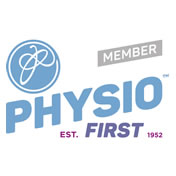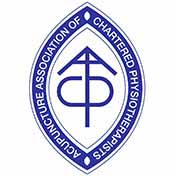A stroke happens when the blood supply to the brain is disturbed in some way. As a result, brain cells are starved of oxygen. This causes some cells to die and leaves other nearby cells damaged.
A stroke can result from different causes. One mode is a blockage to the blood supply to the brain, for example a blood clot formed within the brain (cerebral thrombosis), or a clot formed elsewhere in the body (such as the heart) that then travels to the brain. Blood clots can block one of the arteries (blood vessels) that carry blood to the brain. This type of stroke is called an ‘ischaemic stroke’. Conversely, a stroke can also occur when a blood vessel bursts inside the brain and bleeds (‘haemorrhage’). With a haemorrhage, blood seeps into the brain tissue and can cause additional damage.
A Transient Ischaemic Attack (TIA) or ‘mini-stroke’ is a short-term stroke that lasts for less than 24 hours. The oxygen supply to the brain is quickly restored and often symptoms disappear. A person may experience a TIA without realising that is has happened, but may simply feel drowsy for a short period whilst it is occurring, displaying very minor symptoms immediately afterwards. A transient stroke needs prompt medical attention because it indicates pathology within the brain and also a serious risk of a major stroke occurring at some time in the future.
Strokes usually take place suddenly, without much warning. A stroke may affect each individual very differently, depending upon which area of the brain is damaged, and the type of stroke that has occurred. Different areas of the brain control different functions such as movement, sensation, speech, memory, swallowing and balance, therefore symptoms may affect any one of these areas in an individual.
Common symptoms include:
- Weakness down one side of the body, ranging from a mild loss of strength to varying levels of paralysis affecting either or both the arm and leg
- The affected side will often feel weak and heavy, which makes it more difficult for the person to move
- Weakness down one side of the face, causing the face and mouth to droop
- Speech may become difficult or become difficult to understand
- Swallowing may be affected
- Loss of muscle co-ordination and / or balance
- Brief loss of vision
- Severe headache
- Confusion
- In more severe cases, loss of consciousness may occur
Physiotherapy management following a stroke
 The aim of physiotherapy following a stroke is to help regain as much strength, movement, co-ordination and function as possible. The severity of the stroke will indicate how much recovery is possible, but physiotherapy works to maximise potential recovery.
The aim of physiotherapy following a stroke is to help regain as much strength, movement, co-ordination and function as possible. The severity of the stroke will indicate how much recovery is possible, but physiotherapy works to maximise potential recovery.
Given that the brain is ‘plastic’ (in other words, it can adapt and effectively re-programme to varying degrees following damage), correct and timely physiotherapy input can significantly improve both the physical and mental outcome for an individual.
Often, the unaffected side becomes dominant and overactive to compensate for the weaker (affected) side. This means that a person who has had a stroke will tend to rely heavily on the stronger side of their body. Physiotherapy input is important in focusing on getting the affected side of the body to work more effectively, helping with normal movement, co-ordination, balance and general function.
Recovery following a stroke is most significant within the first 3 months, as this is the optimal time for ‘neuroplasticity’ to occur. The degree of recovery depends upon many factors, the most important being the severity of damage caused to the brain by the stroke. Although the majority of a person’s recovery is achieved within the first 12 months following the injury to the brain, recent research has demonstrated that significant improvements can be made for up to 5-10 years after in some individuals.
A Specialist Neuro Physiotherapist will thoroughly assess an individual and their presenting symptoms and problems immediately after the stroke and then continuously throughout their rehabilitation process. Together with the individual and their family / carers, your physiotherapist can help to formulate a rehabilitation plan that is specific to that individual’s needs and personal goals.
Each individual’s stroke, symptoms, abilities, needs and goals are unique to them. At Yorkshire Neuro Physiotherapy, we recognise that everyone is different, and so we work hard to address each individual’s difficulties and to achieve the personal needs and aims of each client, alongside their family and friends, and any other health professionals who may be involved.
If the stroke is severe, this could mean helping with getting from bed to chair, or on or off the toilet. We can teach family and carers how to move and handle patients following a stroke, how to help to facilitate the rehabilitation process through stretching, positioning etc, or with long-term management plans if significant future care is needed. If the stroke is mild, physiotherapy could help with perhaps a return to running, cycling and other sporting activities.
Physiotherapy input may involve ‘hands-on therapy’ to facilitate normal movement of the body, to mobilise tight soft tissues to improve flexibility, and to provide the correct stimulus to the body to evoke normal muscle reactions and reduce spasticity and ‘high tone’. Rehabilitation aims to restore ‘normal movement’ as far as is possible. Exercise rehabilitation is important to support the effects of manual therapy and to increase the exercise tolerance of the individual recovering from a stroke. An exercise programme needs to be progressive, with clear aims, and ideally needs to be reproducible outside of the physiotherapy sessions (for example at home) to enable rehabilitation to continue regularly.
With the correct and timely physiotherapy intervention, long-term improvements can be made. Our team can help you to get your life back following a stroke. Physiotherapy sessions may take place at your home, your care home, or at our designated neuro-rehabilitation clinics. Rehabilitation can occur alongside other health professionals who are involved in your care, and we can provide intensive, regular and short-term physiotherapy, intermittent ‘bursts’ of treatment, or long-term rehabilitation, as required by you and your needs. We are happy to provide private physiotherapy alongside NHS physiotherapy treatment in order to help to maximise your outcome and recovery.
For all enquiries, or to find out more about us and our services, please contact us.





